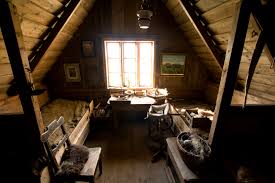记忆方法
记忆单词“attic”可以采用以下简单方法:
想象一个“at”开头的故事,“tic”像小虫子。故事是这样的:一只小虫子“tic”爬到了“at”某个房子的顶部,这个顶部其实是一个储藏物品的地方,通常在屋顶下,这就是阁楼或“attic”。通过将“at”和“tic”结合,以及故事中的场景,可以帮助记忆“attic”这个词的含义。
想象一个“at”开头的故事,“tic”像小虫子。故事是这样的:一只小虫子“tic”爬到了“at”某个房子的顶部,这个顶部其实是一个储藏物品的地方,通常在屋顶下,这就是阁楼或“attic”。通过将“at”和“tic”结合,以及故事中的场景,可以帮助记忆“attic”这个词的含义。
以上内容由AI生成, 仅供参考和借鉴
中文词源
attic 阁楼
来自Attic, 雅典别称,指该地一种建筑风格。
英语词源
- attic
-
attic: [18] In classical architecture, an Attic order was a pilaster, or square column (the naḿe comes from Attica, a region of ancient Greece of which Athens was the capital). This type of column was often used in a relatively low storey placed above the much higher main façade of a building, which hence became known in the 18th century as an attic storey. It was a short step to applying the word attic itself to an ‘upper storey’; the first record of it in this sense comes in Byron’s Beppo 1817: ‘His wife would mount, at times, her highest attic’.
- Attic (adj.)
- 1590s, "pertaining to Attica," from Latin Atticus, from Greek Attikos "Athenian, of Attica," the region around Athens (see Attica). Attested from 1560s as an architectural term for a type of column base.
- attic (n.)
- "top story under the roof of a house," 1855, shortened from attic storey (1724). The term Attic order in classical architecture meant a small, square decorative column of the type often used in a low story above a building's main facade, a feature associated with the region around Athens (see Attic). The word then was applied by architects to "a low decorative facade above the main story of a building" (1690s in English) to convey a classical heritage where none exists, and it came to mean the space enclosed by such a structure. The modern use is via French attique. "An attic is upright, a garret is in a sloping roof" [Weekley].
权威例句
- 1. There are five bedrooms, a large attic above, and wine cellars below.
- 有5间卧室,顶层是一个宽敞的阁楼,底下是酒窖。
- 2. I outfitted an attic bedroom as a studio.
- 我把阁楼卧室改装成了工作室。
- 3. furniture stored in the attic
- 存放在阁楼的家具
- 4. The idea evolved from a drawing I discovered in the attic.
- 这种想法是从我在阁楼里发现的一幅画得到启发的。
- 5. I've cleared out all that old junk in the attic.
- 我把阁楼里所有的废旧杂物都清除干净了。
